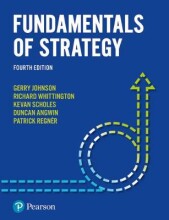Summary: H14 - Phys Ch 3 + Zoo Ch 30
- This + 400k other summaries
- A unique study and practice tool
- Never study anything twice again
- Get the grades you hope for
- 100% sure, 100% understanding
Read the summary and the most important questions on H14 - Phys ch 3 + Zoo ch 30
-
1 -
This is a preview. There are 3 more flashcards available for chapter 1
Show more cards here -
What are anabolic and catabolic reactions?
- Anabolic: involves the production of larger molecules from smaller reactants.
- Catabolic: involves the breakdown of larger molecules into smaller molecules.
-
What is ATP and from what it synthesized?
- A compound which serves a s a temporary energy storage.
- Synthesized from a nucleotide called adenosine diphosphate (ADP) and a phosphate (Pi).
- A compound which serves a s a temporary energy storage.
-
What type of reaction is ATP synthesis
A condensation reaction but also a phosphorylation reaction because of addition of P.- ADP+P+energy = ATP + H2O
- ADP+P+energy = ATP + H2O
-
Where do cells get the energy to synthesize ATP?
From glucose oxidation because it has a negative energy change and it occurs spontaneous. -
How many mol ATP can be synthesized from the energy of 1 mol glucose? Why is this?
- 1 mol glucose releases energy to make 98 mol of ATP.
- HOWEVER: only 38 mol of ATP is made in practice. This causes the net energy change to be negative and therefore the reaction can proceed in the forward direction, yielding ATP as a product.
-
What are the 3 stages of glucose oxidation and where do the reactions take place?
- Glycolysis. Takes place in the cytosol.
- the Krebs cycle. Occurs in the mitochondrial matrix.
- Oxidative phosphorylation. Occurs across the inner mitochondrial membrane.
-
What are the 3 major results of glycolysis?
- After glycolysis each glucose has broken down into 2 pyruvate molecules.
- 2 ATP molecules are consumed during glycolysis, but 4 ATP is produced, meaning a net synthesis of 2 ATP.
- 2 molecules of NAD+ are reduced, yielding 2 molecules of NADH for every molecule of glucose.
-
2 -
This is a preview. There are 7 more flashcards available for chapter 2
Show more cards here -
Why is glycolysis useful for cells?
- Because it produces some ATP
- Sets the stage for subsequent events that yield more ATP
- NADH releases energy that will be used to synthesize ATP in oxidative phosphorylation
- Because it produces some ATP
-
What is the "linking step" and where does this happen?
The step between glycolysis and the Krebs cycle in which pyruvate is converted into acetyl CoA in the mitochondrial matrix. -
What are the major results of the Krebs cycle?
- After each Krebs cycle 2 CO2 molecules have been generated as end products.
- Only 1 ATP is generated per Krebs cycle, and therefore 2 in total for each glucose molecule.
- In 1 cycle 4 co-enzymes are produced, namely 3 NADH and 1 FADH2.
- Higher grades + faster learning
- Never study anything twice
- 100% sure, 100% understanding
































